
http://www.umn.edu/urelate
612-624-6868
spring 2017 Colloquia
Thursdays, 4:00 - 5:30 pm, Elliott N639
February 2
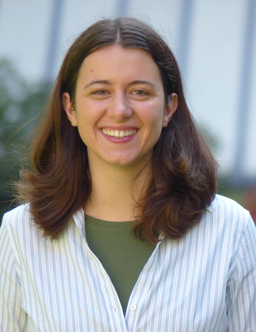 Lana Yarosh, Computer Science and Engineering
Lana Yarosh, Computer Science and Engineering
"Embodied Interaction and Computing"
Embodied interaction is a revolution in the design of computing artifacts, which "emphasizes the primacy of natural practice over abstract cognition in everyday activity." I will discuss the historic aspect of this approach and elaborate with a specific example from my recent research in Computer Science.
Suggested reading:
The first chapter of this book: Paul Dourish. 2001. Where the Action Is. MIT Press, Cambridge.
February 9
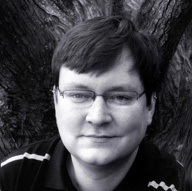 Roy T Cook, Philosophy
Roy T Cook, Philosophy
"The Paradox of Distinctions"
Drawing sharp distinctions is a central tool of philosophy and many other disciplines. In this talk I show that the drawing of arbitrary distinctions leads to paradox, and I survey some preliminary responses to this surprising puzzle.
February 16
 CCS Membership Get Together Potluck,
CCS Membership Get Together Potluck,
3:00 - 5:00pm
N639 Elliott Hall, all CCS members and anyone who would like to become a member are invited, please bring an appetizer or dessert to share
February 23
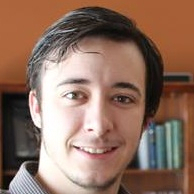 Alexander Bratch, Psychology, Philosophy
Alexander Bratch, Psychology, Philosophy
"Cortical Organization of Body Part Relationships"
In the past 30 years, human and monkey neuroimaging studies have extensively investigated category-selective regions of the visual cortex. While a great deal of work has been done on face-selective cortical areas, body-selective areas remain poorly understood. Given the importance of body stimuli in our daily lives, we sought to further investigate the processing dynamics of the neural mechanisms underlying body perception. Using 3 Tesla fMRI, we presented human subjects with apertures containing a hand and wrist that were presented normally or parametrically varied in rotation to induce the percept of an aligned arm or misaligned arm parts, respectively. We observed modulation of the activity in fusiform areas, but not extrastriate areas, as a function of subjects' perception. Furthermore, we observed activity in retinotopic regions that is consistent with predictive coding models of visual processing.
March 2
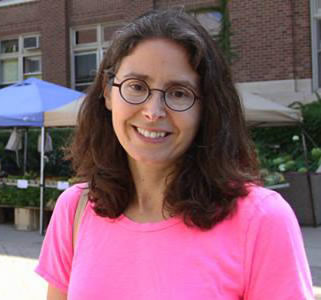 Traci Mann, Social and Health Psychology
Traci Mann, Social and Health Psychology
"The Myth of Willpower"
People generally believe that it is one's willpower ability that separates the thin from the obese. I will argue that willpower — while highly consequential in many life domains — is not an important factor in explaining people's weight, and that diets fail more because of biology than because of willpower. Then I'll talk about healthy eating strategies that do not involve willpower. Overall, I will describe a sensible middle ground between endless restrictive diets, on the one hand, and excessive overeating, on the other.
Traci Mann is Professor of Psychology at the University of Minnesota. She received her PhD in 1995 from Stanford University, spent ten years on the faculty at UCLA, then moved to the University of Minnesota and started the Health and Eating Lab. She is interested in basic science questions about cognitive mechanisms of self-control, and in applying social psychology research to promoting healthy behavior — particularly eating — in individuals' daily lives. Her research has been funded by NIH, NASA, and the USDA, and she is the current president of the Social, Personality and Health Network.
Wednesday, March 22 - 2:30-3:30 pm
Elliott N219 (or N639, to be determined)
 "Neuroscience and Diversity - New Methodologies"
"Neuroscience and Diversity - New Methodologies"
Luke R Enge, PhD, Scientific Consultant, Brain Products, Munich Germany
This talk will discuss the relationship between neuroscience and diversity research. Dr. Enge will discuss solutions for these research areas with an emphasis on current/future trends in neuroscience. Some examples include Mobile Brain/Body Imaging (MoBI), multi-subject recordings (e.g., in education) and the integration and analysis of multiple physiological signals in both the lab and real world.
Dr. Luke R. Enge received Bachelor degrees in Psychology and Spanish Studies from the University of Minnesota in 2008. He worked with Drs. Richard Lee and Chad Marsolek with the goal of integrating neuroscience and diversity research. He received his Master’s Degree and Ph.D in Experimental Psychology with an emphasis in Social-Cognitive Neuroscience and Quantitative Methods from the University of Texas – El Paso in 2016. His research focused on neural mechanisms of social memory formation (sleep and memory consolidation) in the context of stereotyping/prejudice, person perception and emotion. Dr. Enge is a Scientific Consultant in the Marketing Department at Brain Products, based in Munich, Germany. He supports Brain Products in providing solutions for neurophysiological research across a variety of research applications. His current topics range from mobile EEG to Brain-Computer Interfaces.
March 30
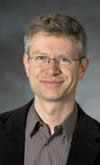 Andrew Oxenham, Psychology
Andrew Oxenham, Psychology
"Pitch: Neural coding and perception"
Our ability to extract pitch information from complex acoustic waveforms is important for speech and music perception and for solving the 'cocktail party problem'. This talk will review recent work from our lab that combines behavioral, neuroimaging, and computational-modeling approaches to elucidate the mechanisms underlying pitch perception.
 April 25
April 25
Spring Research Day
May 4
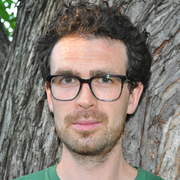 Link Swanson, Libraries
Link Swanson, Libraries
"Hallucination and Perception: A Delicate Balance of Top-down and Bottom-up in the Predictive Brain"
Abstract
Recent work in computational systems neuroscience hypothesizes that hallucinatory experience and perceptual experience share many underlying neural mechanisms. In this talk I present an overview of my recent work on the scientific and philosophical implications of Bayesian predictive processing accounts of hallucination. I argue that such accounts offer powerful new tools to understand hallucinatory phenomena as they occur in psychopathology as well as in psychedelic drug states. I demonstrate how Bayesian neurocomputational models can illuminate the mechanisms by which neuromodulator molecules can lead to hallucinations and altered perception, cognition, and attention.

 Scott Sponheim
Scott Sponheim